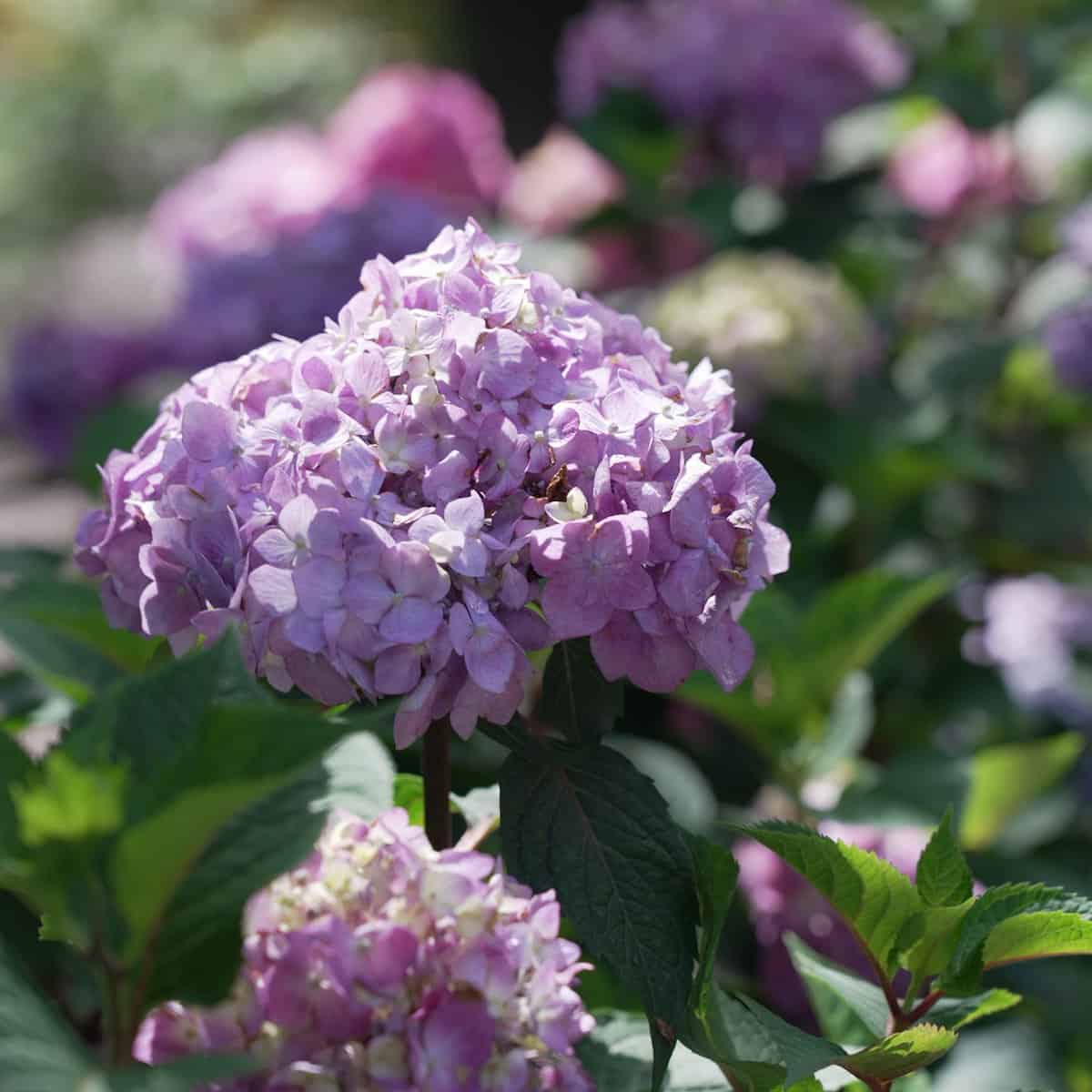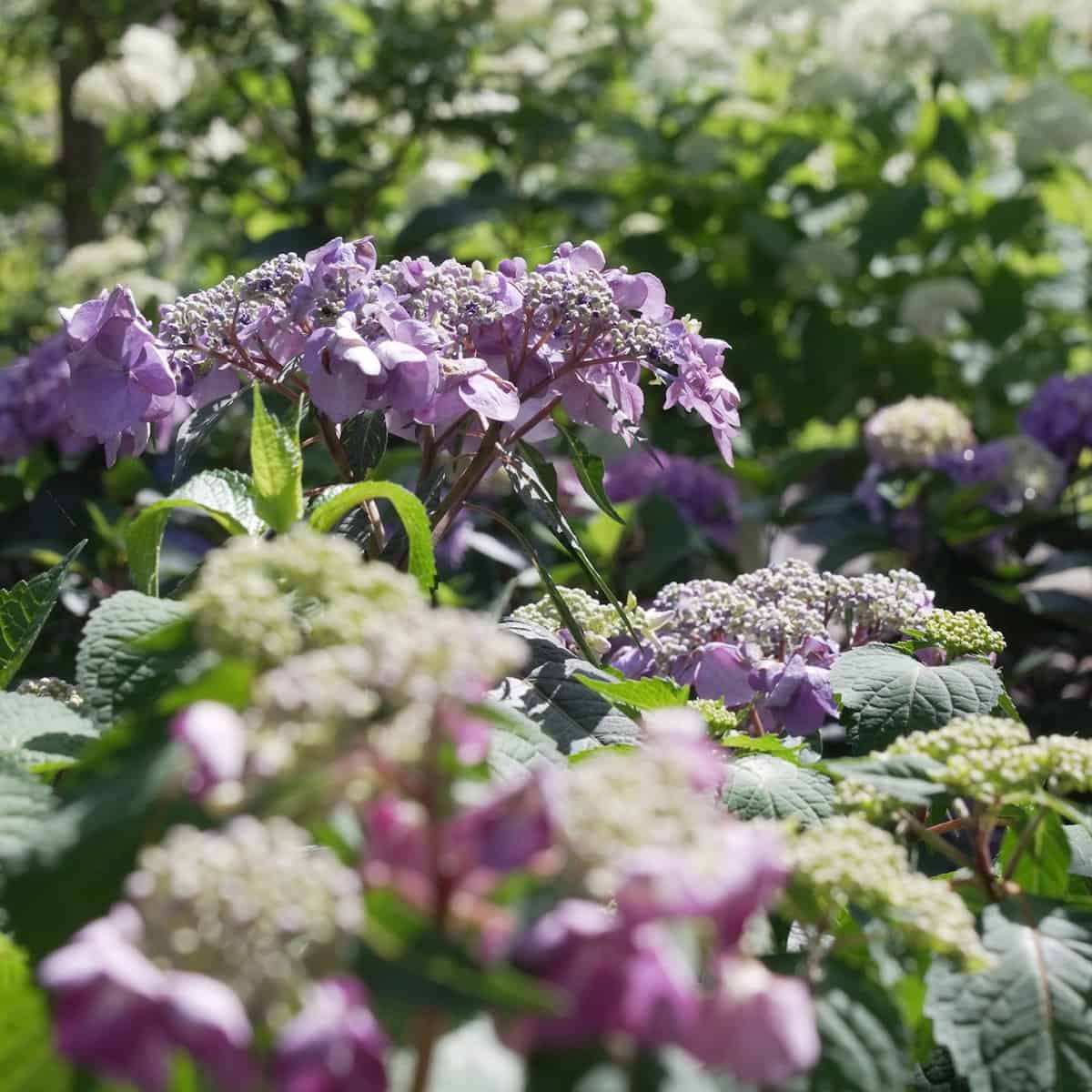How To: Change Hydrangea Color
Hydrangeas (hydrangea macrophylla) are one of the only types of flowers that have the unique ability to change colors. The color change is a response to the amount of aluminum in the soil that it is planted in. These gorgeous plants are typically used in landscaping and are like pH alarms for your garden. Many gardeners will plant hydrangea near pH-sensitive plants to help monitor the pH levels in their gardens. Blue or bluish-purple blooms typically signify acidic soil (pH under 6.0), while pink or reddish blooms signify alkaline soil (above 7.0). If a soil has a pH level between 6 and 7, your followers will bloom purple or pinkish-blue.
If you have a blue or pink bigleaf hydrangea, you can control the color palette by fiddling with the soil’s pH levels. It is always fun to experiment with and a fantastic way to teach kids about soil chemistry.




Before you begin: Be careful when playing around with solid pH because many plants are particularly sensitive to changes in pH levels. The wrong pH can lead to nutrient uptakes and cause stress in some plants. This is especially true with edible plants as most vegetable gardens thrive best with a neutral pH.
Also, not all hydrangea types will change color according to soil pH. Lacecap and Mophead varieties are more likely to respond to soil chemistry. A hydrangea with white flowers will not change colors either. Avoid messing with soil pH when dealing with newly transplanted hydrangeas. Plants, just like people, get stressed out. Newly transplanted plants are typically already stressed from their move and might not respond well to more change. Once the plant has grown for a season, then you can follow the steps below to try to change the flower color.
Step 1: Wait until the spring or fall.
The best time to use products that adjust pH is in the spring or fall seasons. That gives the plant plenty of time to absorb the aluminum ions that lead to the color change. It will be difficult to notice any color changing effects unless plants are fully bloomed. Plus, color changes aren’t automatic and in some cases, color changes can take several weeks or months to be able to see.
Step 2: Test your soil’s pH level during the growing season.
Typically, it is a good idea to perform regular soil tests to check for nutrient imbalances or issues with the soil’s pH because it’s basically impossible to tell just by looking at the soil.
While it is true that hydrangeas can give you an idea of the pH of the soil, not all cultivars respond to pH changes. So if you are unsure what variety you have, it is a good idea to check and see if pH and flower color correspond to avoid adding unnecessary products to the soil.
pH lower than 6.0 produces blue or light purple-blue blooms
pH between 6.0 and 7.0 produces purple or blue-pink blooms
pH above 7.0 produces reddish, pink blooms
The lower the pH of the soil, the more blue the flowers and the higher the pH, the more red they will be. While store-bought products can change soil pH, there are other factors that can affect pH levels. For example, watering with hard water can raise pH levels.
Step 3: Adjust the soil’s pH to get the desired color.
To lower the pH level of the soil and achieve bluer-toned flowers, use sulfur or aluminum sulfate – both are readily available at garden centers and nurseries. Natural options for increasing acidity and lowering pH levels include adding coffee grounds or citrus peels to the soil the plant is planted in.
To raise the pH level of the soil to get pink flowers, apply ground lime – also typically really available. Be careful… Too much lime can cause the leaf yellowing. Be sure to water the plant well after applying lime.
It might be necessary to reapply products several times and remember that changes to color can take months to become visible. Also, keep in mind that raising pH is generally easier than lowering it.
Step 4: Treat soil every 2 to 4 weeks, starting in early spring or late autumn.
Making a drastic change to color can require quite a bit of upkeep. Even after you apply products like aluminum sulfate or lime, the soil eventually will return to its original pH levels. Regular treatments with pH adjusting products will be necessary to maintain a certain pH level.
Step 5: To change your hydrangea color to pink, feed with a 25-10-10 fertilizer.
Applying a 25-10-10 fertilizer to your hydrangea in the spring or fall helps prevent plants from taking up aluminum, which will affect bloom color. This is because fertilizers higher in phosphorus keep aluminum out of the plant’s system.
Another way to prevent aluminum uptake is to put crushed eggshells around the base of your hydrangea plants. The shells will slow the absorption of the element and prevent the plant from turning blue.
Step 6: To change your hydrangea color to blue, feed with a 25-5-30 fertilizer.
A 25-5-30 fertilizer is recommended for those wanting to change their hydrangea blooms to blue. A lower phosphorus content allows the plant to access aluminum in the soil. It can be difficult to maintain a blue color in hydrangeas that are planting in naturally alkaline soils.
If you have your heart set on blue flowering hydrangea, you may want to consider growing them in containers. This will make it much easier to control soil pH levels.
Increased acidity can also be achieved by adding organic matter like coffee grounds, fruit and veggie scraps, grass clippings and leaves.
Planting around with hydrangea colors can be really fun, and can contribute both to garden color and beautiful flower arrangements. Just remember that drastic color changes might require a lot of continuous effort and upkeep. Growing in containers can reduce the amount of work needed to maintain certain color changes. Either way, we hope you enjoy the journey of changing the colors of your hydrangea plants!